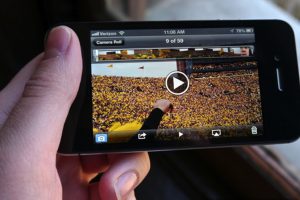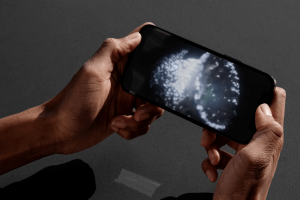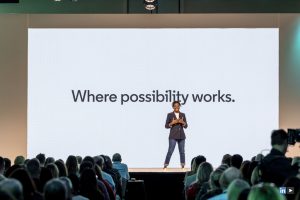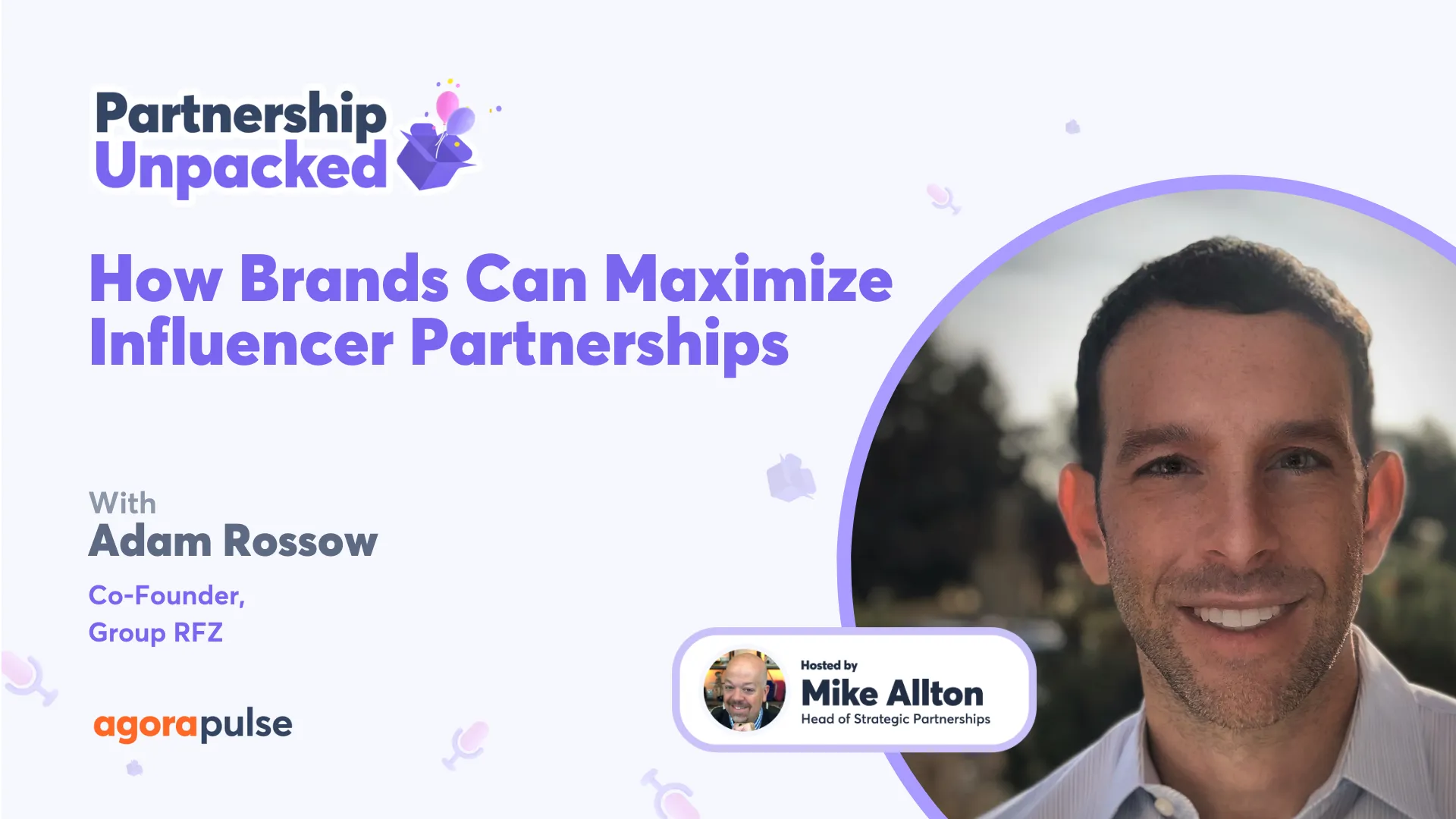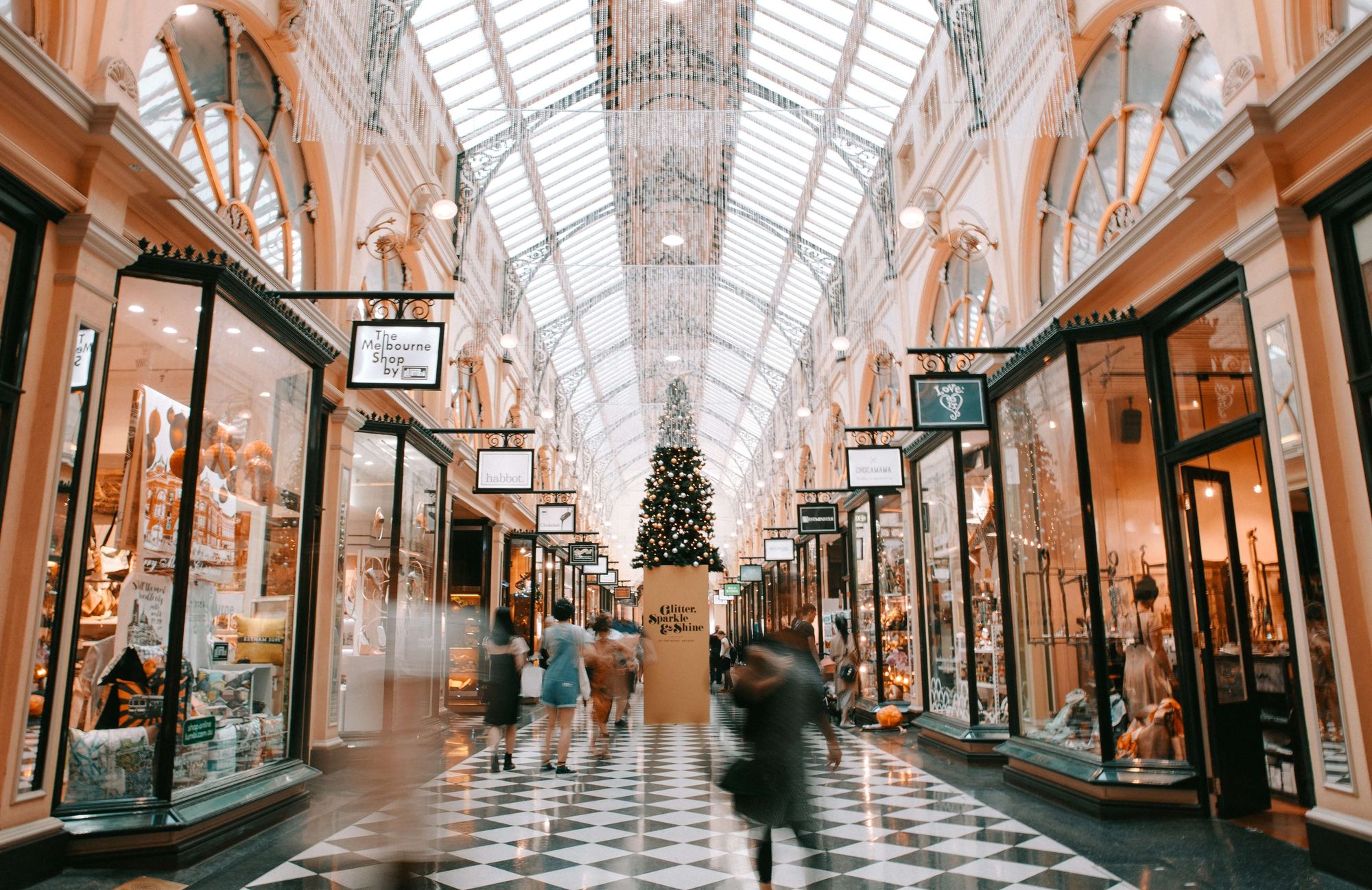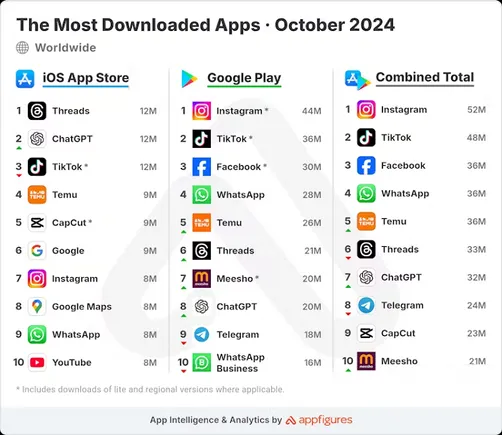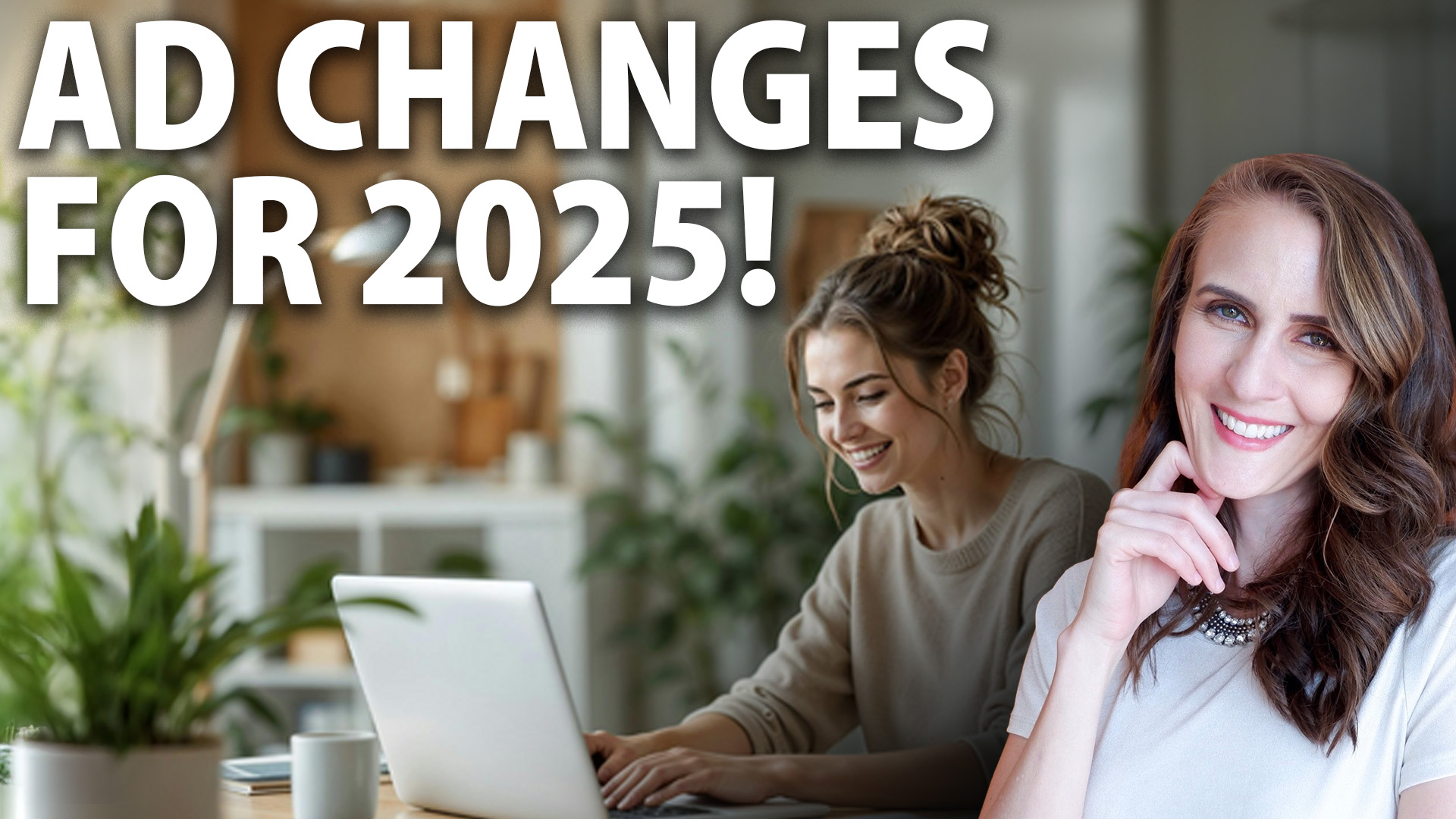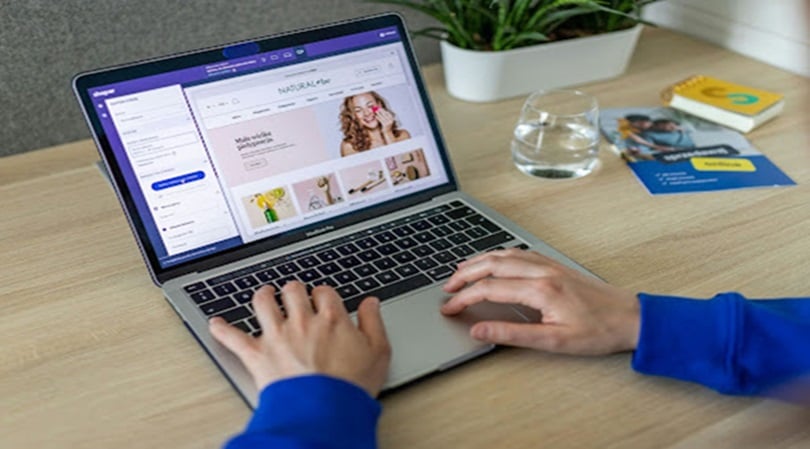Just like launching a rocket into space requires a tremendous amount of initial energy to achieve lift-off, launching a new influencer marketing campaign with brand new influencers takes a tremendous amount of work.
But, once a rocket achieves a certain altitude, gravitational forces sheer away and the rocket can continue moving out into space on pure momentum. Influencer marketing can work the same way!
What if you could leverage ongoing relationships and amplify existing content and motions to keep… moving… forward?
That’s what we’re covering in today’s episode of Partnership Unpacked.
Welcome back to Partnership Unpacked, where I selfishly use this time to pick the brains of experts at strategic partnerships, channel programs, affiliates, influencer marketing, and relationship building… oh, and you get to learn too! Subscribe to learn how you can amplify your growth strategy – with a solid takeaway every episode from partnership experts in the industry.
And today’s certainly going to be another highly tactical discussion. Because I can’t tell you how many times I’ve gone through the trouble to find an influencer, meet with them, bring them up to speed on our company and audience, and build a campaign with them… only to have to go through the entire process again with the next campaign or feature launch.
There has to be better, more efficient ways to find and work with influencers, right?
That’s exactly what Adam Rossow is going to talk to us about.
Adam has been working for decades to help brands understand how to test, create and optimize their marketing and communications. Group RFZ was founded with a similar charge in mind – to give the marketing suite the tools and insights they need to be successful, and their focus is on the influencer marketing space where they help brands and agencies get past vanity metrics and understand exactly how their marketing programs are impacting the way consumers think, feel and act.
Partnership Unpacked host Mike Allton talked to Adam Rossow about:
♉️ How to truly measure the success of influencer marketing campaigns
♉️ Where marketers can invest in influencer marketing and achieve momentum
♉️ Why long term relationships with influencers are so important
Subscribe to the show calendar: agorapulse.com/calendar
Learn more about Adam Rossow
Resources & Brands mentioned in this episode
Full Notes & Transcript:
(Lightly edited)
How Brands Can Maximize Influencer Marketing Partnerships w/ Adam Rossow
[00:00:00] Mike Allton: Just like launching a rocket into space requires a tremendous amount of initial energy to achieve liftoff. Launching a new influencer marketing campaign with brand new influencers takes a tremendous amount of work, but once a rocket achieves a certain altitude, gravitational forces sheer way and the rocket continue moving out into space on pure momentum.
Influencer marketing can work the same way. What if you could leverage ongoing relationships and amplify existing content and motions to keep moving forward? That’s what we’re covering in today’s episode of Partnership Unpacked.
This is Partnership unpacked your Go-to Guide to Growing Your Business through partnerships quickly. I’m your host, Mike Galton. If each episode unpacks the winning strategies and latest trends from influencer marketing, To brand partnerships and ideas that you can apply to your own business to grow exponentially.
And now the rest of today’s episode,
welcome back to Partnership Unpacked, where I selfishly use this time to pick the brains of experts at strategic partnerships, channel programs, affiliates, influence marketing and relationship building. Oh, and you get to learn, too. Subscribe to learn how you can amplify your growth strategy with a solid takeaway.
Every episode from partnership experts in the industry and today is certainly going to be another highly tactical discussion. ’cause I can’t tell you how many times I’ve gone through the trouble to find an influencer, meet with them, bring them up to speed in our company and audience, and build a campaign with them.
Only have to go through the entire process again with the next campaign or feature launch. There’s gotta be a better, more efficient way to find and work with influencers. Right? Well that’s exactly what Adam’s gonna talk to us about. Adam’s been working for decades to help brands understand how to test, create, and optimize their marketing and communications group.
R F Z was founded with a similar charge in mind to give the marketing suite the tools and insights they need to be successful. And their focus is on the influencer marketing space where they help brands and agencies get past vanity metrics and understand exactly. How their marketing programs are going to impact the way consumers think, feel, and act.
Hey Adam, welcome to the show.
[00:02:28] Adam Rossow: Thank you. Great to be here. [00:02:30] Mike Allton: So cool to have you. And I wanna start by kind of setting the stage for our audience. I would love you for you to share how you got started in influencer marketing and the kind of work that you’re doing now with Group R F Z. [00:02:41] Adam Rossow: Yeah, sure. The shift kind of happened organically when we started Group R F C and myself.
My other partners were all market researchers By trade, it was more focused on content marketing and trying to help marketers and communication professionals kind of get past those vanity metrics. As you mentioned in the beginning. Understand how visitation to a website, a blog, a piece of sponsored content, really impacted visitors and consumers.
And then say, probably about three years ago at this point, we started getting more and more inquiries from our clients saying, Hey, that content marketing thing that’s all great in our website and our content hub blog. That’s all great. We are having the exact same problems. I. Really understanding the value and impact of influencer marketing.
So we started kind of porting our methodology for understanding content over to influencer with a few tweaks obviously, and it just kind of ran and ran from there. As you well know, the growth of influencer marketing is, as you put, it’s, it’s kind of like a rocket ship, right? Comes the need for more and more measurement and insights so clients can understand exactly what their programs are doing and where to put their dollars.
[00:04:00] Mike Allton: That’s so awesome when a company I think finds that seem as others. Others have called it right, where they’ve identified a whole a need, a gap. That they’re able to fill and you’re able to experience that kind of, you know, exponential growth as a result. But I know when I’m talking to businesses and when I’m talking to clients, the number one challenge they keep telling me with influencer marketing is finding great influencers to work with.
Can you talk about how to select the best influencers for your campaign and why it’s important to build those longstanding influencer partnerships?
[00:04:34] Adam Rossow: Yeah, absolutely. So kind of a, a two part question there, and you’re right Mike, that’s the number one thing we hear from clients. You know, how do I choose the best influencers?
How do I choose the best influencers? And frankly, we’re doing more measurement kind of on the backend of campaigns, but we’ve definitely noticed some things along the way and, and happy to share. So at the very basic level, you should be looking at an influencer’s kind of follower makeup. Their posts, right?
Understanding their engagement rate, things like that. But I would say that just relying on. Maybe quantitative numbers, right? So how many followers they have, what the demographics of those followers look like, their engagement rate, things like that. That’s kind of table stakes. What I think companies really need to do, if they want to be serious about kind of getting in bed, so to speak, with the right partners.
Obviously they have to understand do they have the right audience, right? So if you are a product or you have a product as a brand that’s really targeting a certain audience, obviously you want that audience to align with the influencer you pick, right? That’s pretty simple. Looking at the type of.
Content that they’ve posted in the past and really digging into it, I think is critically important. So are they posting content that is funny? Is it educational? Is it inspiring? Right? Does it kind of match the aesthetics and the kind of feel and tone of your brand? So that that’s hugely important. Do you know if they liked your brand?
Have they posted about it before organically? Are they customers? If you can strike a partnership with someone that actually really likes your brand and what you do and what you stand for, that would be fantastic. I think the next thing is probably the toughest thing to ascertain, but it could very well be the most important.
So do they align with your brand and specifically its values? So do they have maybe certain thoughts on the importance of sustainability that maybe doesn’t match with yours? Do they think about hugely important topics like social justice differently? A lot of times you can get that insight from the posts themselves and from just different places, but sometimes you might need to interview these individuals as well.
I think what we’ve learned in the past, Couple of years, probably longer, is that you can have a huge backlash if the influencers and the brands are out there doing things a bit differently, especially if that person becomes synonymous with your brand, a bigger spokesperson, et cetera. And I would say lastly, what I.
Tell clients to look for is, are they hawking every single product under the sun, right? So not just kind of a, a product or a service that’s competitive to yours, but are they really just out there taking every dollar possible and throwing everything out there? ’cause that’s something I’d probably stay away from as well.
So couple things there.
[00:07:47] Mike Allton: Yeah, that’s so true. And I love your second point about alignment. One of the things I talk about when I’m teaching influencer marketing is take a look at an influencer’s posts, look at their comments and think about how you might feel if that was your brand and your logo and your brand name.
Making those statements, would you feel comfortable? Would you feel confident? Or would you be running quickly to your social media manager and asking them, why on earth did they say that online? Because that, that’s gonna help us kind of go through that exercise, that thought exercise of whether or not they’re aligned.
And I loved your idea of just asking them, you know, having a conversation and, and asking them their thoughts and opinions on some of those topics that are of real importance to the brand. And by extension, our audience.
[00:08:31] Adam Rossow: Yeah, no, absolutely. I think you really have to look at any influencer, whether they’re micro, whether they’re a celebrity influencer.
You have to look at them through the lens of, this person is going to be our mouthpiece. They are going to be a spokesperson for the company. They are going to be tied to us. Whether we like it or not, right? That’s just the case these days. So it’s not to say to not experiment and not try different influencers and stuff like that, but I, I do think you have to be pretty diligent about the upfront work that you do, and really make sure that this person is as good a fit as possible for the brand.
[00:09:10] Mike Allton: Right now, we’ve had tools on the show in the past like Captivate and Affable. That kind of helps with some of the things that you’ve been talking about. How much does Group R F C help with everything you just described? [00:09:22] Adam Rossow: That’s really not our, I would say our strong suit is helping kind of at the front end, choose influencers.
Now, I would say though that through measurement of campaigns, and we can get into that a little bit, how that all works. We are able to give you insights that help you moving forward, such as micro influencers are the best for you on Instagram, or influencers who really have a kind of humorous bend or kind of the best play for your brand or influencers who put out this type of message with this audience and this setting.
Really, really work well. So we are able to give you that info to strategically look ahead, but coming to us and saying, Hey, I need to choose from, you know, 50 influencers. I need kind of the, the 2030 best. It’s not something we do often. We could definitely do some exploratory research, which frankly, I, I wish more brands invested in doing some research upfront with their target audience to understand if this is a good fit or not.
But it’s not something we, we typically do every day.
[00:10:35] Mike Allton: Got it. Got it. So let’s talk about campaigns. Sure. Let’s talk about how influencer marketing campaigns, they don’t always have to start from zero. I know you can share with us some strategies that marketers can employ to amplify their influencer programs and kind of maybe even stretch their resources a bit. [00:10:52] Adam Rossow: Yeah, no, absolutely. I think what we’re seeing when I think of amplification, the organic campaign, if you will, happens or, or you’re paying influencers, what have you, and then you’re taking that, you’re amplifying it, whether it’s on Meta or TikTok or or whichever channel. We are seeing that more and more and more with brands kind of taking those best performing posts, and I’m putting that in air quotes, which you can’t see, and then kind of amplifying them out.
What I do wish brands would be a little bit more measured about is looking at those organic posts and not just understanding, Hey, this got a really high engagement rate. Let’s boost this one. ’cause engagement rate can mean. A multitude of different things, right? But we are seeing a ton of amplification.
We’re also seeing brands really use that influencer creative in a multitude of ways. So that could be anything from kind of putting that imagery or that video right on their website, including different marketing materials. I mean, some of these influencers, as you know, and, and creators as they’re often called, they put out really, really great stuff, right.
And you’re paying for them to create these idyllic images or videos, uh, about the brand. So you might as well use it kind of across your marketing communications, which we’re seeing a lot of brands do today.
[00:12:18] Mike Allton: Absolutely. Now, you mentioned engagement and engagement rate, which we know those are great metrics, but they’re not necessarily impacting the business, right?
So determining R O I, that’s such a huge challenge when it comes to influencer marketing. How are you using brand lift to measure success?
[00:12:36] Adam Rossow: Yeah, no, it’s a, it’s a great question. So I think when you think about the marketing funnel, so you have the top of the funnel, the middle of the funnel, the bottom of the funnel, the very bottom of the funnel.
You’ve got kind of those buy now, click here, type of products, right? There are some really good ways, especially with so much e-comm, so much D T C brands that people can measure. Kind of the r o i, right? It’s a simple trackable link promo code, stuff like that. That tends to work really, really well. But the truth is, a lot of brands aren’t just selling things online.
They’ve got retail stores, or they’ve got stuff with a, you know, longer purchase cycle. It’s not kind of one of those inexpensive impulse buys, or they’re doing stuff at the top of the middle of the funnel. Campaigns and programs are really geared to build awareness or shift or strengthen perceptions.
Get people in that consideration set, and that’s when it becomes pretty challenging for brands and agencies to really kind of measure the impact against those specific goals. Right? Because just because you have a certain number of views, a certain engagement rate, Doesn’t necessarily mean that people are more favorable to your brand because of the influencer content, or they believe that they’re going to go out and buy your product, your service in the next six months, or that it increased.
Their kind of perceptions or strengthen their perceptions of you. So they think of you now as a more trustworthy brand, or they think of you as a more modern brand or any of those kind of messages that you’re trying to get across or benefits, right? So where Brand Lift comes in is really. When it comes to programs and campaigns that are around those top and middle of the funnel goals.
So at the end of the day, you can measure the impact that the campaign had on things like brand or product awareness, brand love or favorability place in the consideration set, purchase intent. And you can actually see how. Messages came off to those target audiences, right? So you can understand, for instance, if a post or a video or an entire campaign led people to believe that you are a cost-effective brand or a brand that really puts valuable products out there.
Or again, trust is a huge thing that we typically measure. Modern brand, brand for you, whatever those kind of brand attributes are, that’s stuff that can all be kind of tracked and measured and demonstrated via brand left.
[00:15:26] Mike Allton: That’s fascinating. Can you drill down a little bit more into how that actually works?
How, how do you establish how much trust a consumer has in a brand?
[00:15:35] Adam Rossow: Yeah, absolutely. So, you know, the way that we go about it and the way any good brand lift study should be performed is through a control exposed research approach. And without getting too, too into the weeds, really the control exposed approach, just kind of like you.
Probably know about through any type of medical research, pharmaceutical studies, control exposed, very, very popular. The exposed group in the situation are going to be people that have actually seen the content. So they’ve watched that influencer video, they’ve seen that post, right? They’ve scrolled through the story.
The control group is always going to be a lookalike audience, so, A demographic, psychographic, and maybe category usage perspective as the exposed group. So any exposed control, you just want the one differentiating factor to be that the exposed group has seen the content, the control group has not, right?
So that way you’re able to isolate the impact of that specific program or content. By running both of those groups through the same custom online survey, in our case can be anywhere from five questions to 15 questions. And by looking at the differences in how they answered, right, the Deltas, we can come back and say, people that were exposed to the campaign were 10% more likely to.
Purchase your product in the next three months or 15% more likely to trust your brand. And the way we kind of get into trust in different attributes is simply by asking them on a, a one to five scale, how strongly do you agree or disagree with the following statements about Brand X? Right? And one of those statements would be a brand that I trust and if the exposed group.
Much higher than the control group. You know that it was due to that campaign or to that asset, and you pass and everyone’s.
[00:17:35] Mike Allton: Right. Okay. Oh, this is so fascinating. So, okay, so we’re using surveys, we’re using focus groups very much like the advertising industry or even politics and campaigns might use focus groups to help them determine, you know, what message and what angle is gonna resonate the most with a particular audience. [00:17:54] Adam Rossow: This is so cool. Yeah, and, and it’s not so much a focus group, although I think focus groups in ideation and that initial stage. It can be really, really helpful. But it is online surveys. It’s just, it’s taking really the next step and instead of relying on what we call kind of behavioral metrics or more passive metrics, you’re actually going out and asking people how they right, think, feel, and intend to act.
Right? And then measuring that against something, which is where the control group comes in. So it’s just taking the next step so you know a little bit more, and you’re kind of. Getting the story right from the horse’s mouth, so to speak.
[00:18:34] Mike Allton: Love it. Now, just one other quick follow up question. Have you noticed any difference in the effectiveness of what you’re doing when it comes to B two C versus B two B? [00:18:43] Adam Rossow: Not really, actually. Okay. It really depends on a lot of different factors. So just to kind of make blanket generalizations about kind of the results we see, every campaign tends to be so different. You’ve got different. Types of influencers. You’ve got different types of content, obviously different types of brands.
I will say we are seeing a huge uptick in B two B. I think B two B was on the sidelines for a long time when it came to influencer marketing. I. B two B can often be a little bit late to the marketing party. In my experience, kind of following in the footsteps somewhat of, of B two C with some tactics, but we are seeing a, a huge, huge uptick in the B two B work that we’re doing.
So it’s great to see.
[00:19:31] Mike Allton: So cool, so cool. Folks, I, I hope you’re really digging this deep dive that we’re doing in, in brand lift and measuring influencer marketing and the impact that it has on businesses. And one of the things that Adam mentioned a moment ago was how, particularly in e-commerce, you can measure link traffic, you can measure purchases and that sort of thing, but I want to make sure that if you’re doing that kind of link sharing on social media, you’re measuring it correctly.
So I’ve got a message for you from Darryl Prail, our C M O at Agora Pulse.
[00:20:02] Darryl Praill: It is the arc of triumph. Can you imagine if you’re in charge, if you’re the C M O? Of marketing Paris, what are your main channels? Well, there’s the arc of Triumph. There’s the Eiffel Tower, there’s the Louvre. Those are your channels you’re gonna use to drive tourism dollars in.
Okay. Now, but you’re not the C M O of Paris. In fact, you’re the C M O of your company product service. So what are your main channels? I’m gonna guess they’re things like pay per click, maybe trade shows, events, maybe content. Those are all pretty predictable. Right. Let me ask you this question. Are you treating social media as a main channel?
By the way, only 1.8% of you today measure social media and can prove an r o i in that investment. HubSpot and Gartner say social media is the number one channel to invest in this year. Are you doing it? If not, I can tell you why you’re not doing it. Because you don’t have the tools, you don’t have the mentality, and that’s okay.
We’ve got you covered. You changed the mentality. We’ll give you the tour of Gore. Pulse tracks, all the r o I for you. One place to manage all your social media activity, your number one channel, change your success. Treat social media as channel one C m O to another. My name is Darryl. I’m with the Gore Pulse.
I’ll talk to you soon.
[00:21:20] Mike Allton: Alright, Adam, we’ve got all this data coming in now, right? We’ve got data from the social networks, we’ve got data from our website. We’ve got these surveys that are helping us to measure brand lift. How have you or the brands you’ve worked with, used this kind of metrics and data to kind of course correct and improve or sharpen future campaigns? [00:21:41] Adam Rossow: Yeah, no, it’s a great question. So every brand is, is now asking us how do we get the biggest bang for. Right. It’s proven that influencer marketing works, so that’s not the question anymore. So they just don’t wanna understand or get kind of that rubber stamp that the specific campaign moved the needle, right?
They want to understand. What channels they should be on, which are the best audiences to go after? Which are the best influencers to hire? What type of content should they be putting out there? Should it be all video? Is there still value in static images? Is there a certain content theme that works best?
Right? So there’s so many different. Options. Now when it comes to influencer marketing on where you put things, who you hire, how you position things that they’re looking for, that tight formula, right? That says, okay, I’m Brand X and I should be focused primarily on. Instagram reels with these three specific audiences.
And what really works is this type of messaging delivered in a educational way, right? So they’re looking for that specific, again, formula that helps them optimize so they’re not just throwing stuff out on every single channel, sort of throwing things against the wall and seeing what sticks right. They really want to be.
More strategic with their planning and with their activations. And that’s really what a lot of ’em are, are looking to, measurement, to, to help guide them from.
[00:23:23] Mike Allton: Okay, makes perfect sense. So now if I’m working with a set of influencers as a brand, I know the things that I want to measure, should it be working with them to come up with a, a shared set of KPIs? [00:23:36] Adam Rossow: I think it’s more about aligning on what the main goals of the campaign are and what the main messages are that those influencers are going to be focused on. I never want to let the research kind of drive the bus and I guess supersede the bigger marketing objective or goal, right? As long as the influencers and the brand kind of agree on, you know, here’s what we wanna do with this campaign, then the researcher and, and they’ve got those messages in hand.
Then we can kind of swoop in and, and, you know, figure out the right questions, task from a research perspective and, and everything like that. But I guess that kind of agreement, not necessarily on you, are gonna be measured strictly on X, Y, and Z, but making sure you obviously align with the influencers, if you’re the brand on those specific goals and objectives is really important.
[00:24:40] Mike Allton: Makes complete sense. You gotta have that alignment on goals and objectives. What about, what about some of the things that you’ve seen that haven’t gone so well? I, I know you’ve worked with lots Yeah. Influencers and lots of businesses that are working with influencers. I’m sure you’ve seen some campaign gaps, shall we say, in influencer marketing. [00:24:59] Adam Rossow: Yeah, it’s not all kind of sunshine and rainbows, right? I mean, influencer marketing definitely works, but it, it doesn’t just work automatically. So a couple of the big things that we see that really kind of get a campaign going off the rails a bit when we measure it, number one, is just not being. Upfront in the fact that this is for Brand X, right?
So you’re not showcasing the brand enough. You’re not mentioning the brand enough. I know a lot of influencers and creators, they don’t wanna be hugely overt that this is an ad or that this is sponsored, but at the end of the day it is. And if you want consumers to. Tie your creative and the brand you’re representing together.
That brand has to be front and center to some extent in that creative. So we’ve done a lot of work where research response will be like, oh yeah, that post, that video is so cool. And then we ask who it was for and they have no idea. So that’s kind of a, a big, a big red flag and something to look for.
Again, you don’t wanna be crazy over. You still want to have some creativity and show the brand in kind of a unique and fun way maybe, but not showing the brand. And not mentioning them. Probably a. I think one thing that we’ve seen a couple of times and when we see it, it, it makes the headlines. So I’m thinking about brands trying to put lipstick on a pig, right?
They’re trying to cover up some significant brand and company problems. Through influencer marketing and that’s never really a good idea. I think a really good example is what we just saw with Shein where they kind of flew influencers over to the manufacturing facility and that they got in some pretty deep water there for trying to use influencers to maybe cover up or, or smooth over with what’s really going on over there.
So, um Right, you’ve always gotta be kind of careful of that. I think the other thing that we see quite often, and it’s funny ’cause people do this when it comes to research as well, is kind of this overt stuffing, and that might be overt stuffing of a creative brief. So you’re asking someone to make, let’s say, one minute long TikTok, yet you want them to hit on 15 different messages.
That’s not gonna work out so well. Kind of that stuffing in. And it’s funny, we see this in research too. You know, you’ve got one survey to work with, let’s say, and the client will wanna throw 30 questions into one survey, not thinking about the respondent experience and stuff like that. We find that when you focus or have lack of focus on the two or three main points, you know, when you start to talk about everything under the sun, it, it can all get lost and nothing will really hit home.
[00:28:05] Mike Allton: Less is more. Absolutely right. And I loved your, your point about brands trying to get. Or the influencers trying to get too creative with the posts and they obscure the brand or the relationship that’s involved. It made me think of some of these Super Bowl commercials that brands are spending, you know, tens of millions of dollars to create.
And it’s a beautiful story of a family in the woods and, and you’re enthralled, but at the end you’re like, Wait, this was a commercial for toilet paper, right? Right. It’s in connection, so it’s not memorable. And so it’s totally not effective. Right. It was, it was captivating a story, but it didn’t deliver what it needed to do.
So brands, absolutely, and influencers must, must do what you were talking about and. Make the brand a stronger part of the post. It doesn’t have to be front and center necessarily, but it’s gotta be obvious that this is about that variant or their product or service. So yeah. Adam, this is so cool. I’ve got just one more question for you.
This is my, yeah. My favorite question. I ask this of all my guests. How important have relationships been to your career?
[00:29:08] Adam Rossow: They’re everything that, that’s not really overstating it, truth be told, and it’s relationships across the board and, and they run the spectrum. So I remember, you know, I started off in PR and I still remember my first kind of mentor, Bruce Bobbins.
Back in New York City and how important that relationship was and how he kind of took me under his wing. And then the relationships with my coworkers. One of my partners that I work with today, we started out together at another research agency back here in Denver, and that relationship between us and that trust kind of grew.
We went off and kind of started this thing with our other partner, Jonathan, and that goes all the way to kind of client relationships too and how important those are. You develop kind of deep relationships and especially with kind of people going out and. Changing jobs every couple of years or whatever it is.
It’s not like it was back in the day where people stayed at a job for 10 years. People are kind of jumping around quite a bit lately for one reason or another. Sometimes it’s their choice. Unfortunately, sometimes it’s not. You know, you have those relationships and it’s funny, you get to see certain clients who have now worked with you at five different agencies or across three different brands.
So I think those relationships, whether it’s with coworkers, mentor, mentee, clients, they’re kind of front and center to everything that you do in your career, or at least for me, they have.
[00:30:48] Mike Allton: Yeah. See, this is exactly why I asked this question. I, I loved your answer. First of all, everybody pretty much starts off with the same response.
Relationships are everything they are, and they’re a hundred percent correct, but I don’t ask for examples, but everybody goes into, you know, they, they’re like, their minds are triggered to think about, oh, what were some of the relationships that drove me? Like you mentioned Bruce in New York and you mentioned these coworkers.
Then you went on to clients, and I love that because it. Underlines and stresses the truth of this entire show, which is that the relationships are the most important thing that we have going for us. The relationships with our colleagues, our partners, and our clients, and by extension, our, our influencers.
So thank you for sharing that. Yeah, absolutely. Yeah. And this has been such a fun interview. I appreciate it. Let folks know where they can find you, where they can learn more about you and group R F C.
[00:31:38] Adam Rossow: I think the easiest is just to go to group rfc.com where we’re obviously there we’re on LinkedIn. Again, we’re pretty specialized in what we do.
We really have a focus and it is on brand lift across digital marketing, but obviously influencer marketing is a, is a huge part of that. So we kind of e. Breathe, sleep Brand lift for better or for worse. So, uh, yeah, happy to help you out and kind of advise on anything measurement, right? We know that brand lift isn’t the one stop shop or the cure all for everything measurement.
So if it’s not the right fit for what you’re doing or your brand or your objectives, happy to recommend other approaches too. ’cause at the end of the day, we wanna see you get that r o I and get that dialed in. So you feel good about what you’re doing and confident in what you’re doing as a marketer.
[00:32:28] Mike Allton: Fantastic friends, that’s all we’ve got for today, but don’t forget to find the Partnership Unpacked podcast on Apple and drop us a review. We’d love to know what you think. Until next time, thank you for listening to another episode of Partnership Unpacked, hosted by Mike Alton, empowered by Agorapulse, the number one rated social media management solution, which you can learn more about@agorapulse.com.
If you enjoyed this episode, please subscribe on your favorite podcast player. Be sure to leave us a review. Your feedback is
important to
us. And if you wanna be a part of our audience during live broadcasts, take a look at our calendar@agorapulse.com slash calendar.
Until next time.
